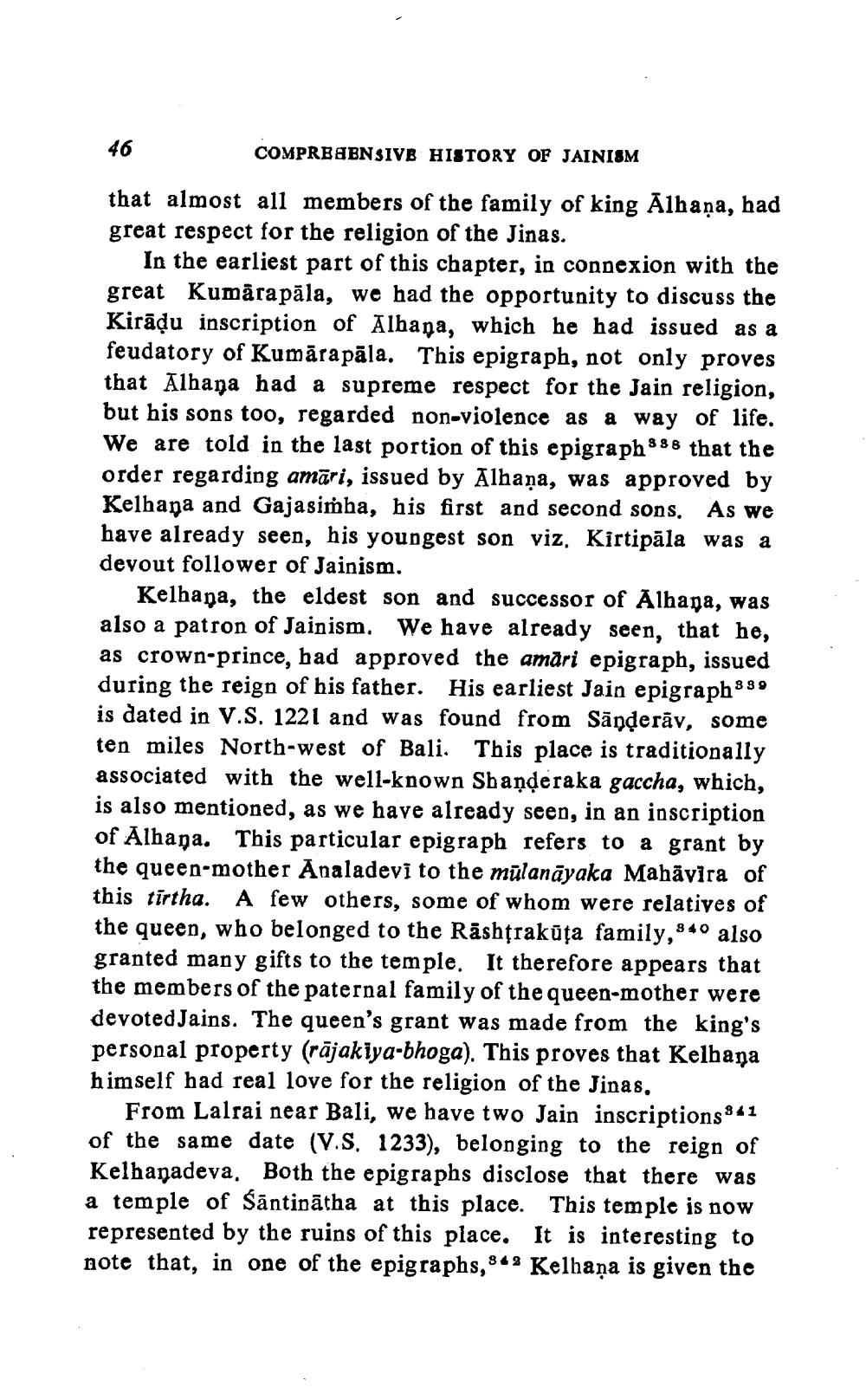________________
46
COMPRBABNSIVB HISTORY OF JAINISM
that almost all members of the family of king Albaņa, had great respect for the religion of the Jinas.
In the earliest part of this chapter, in connexion with the great Kumāra pāla, we had the opportunity to discuss the Kirāļu inscription of Albana, which he had issued as a feudatory of Kumārapāla. This epigraph, not only proves that Alhana had a supreme respect for the Jain religion, but his sons too, regarded non-violence as a way of life. We are told in the last portion of this epigraph888 that the order regarding amāri, issued by Alhaņa, was approved by Kelhana and Gajasimha, his first and second sons. As we have already seen, his youngest son viz. Kirtipāla was a devout follower of Jainism.
Kelhana, the eldest son and successor of Alhapa, was also a patron of Jainism. We have already seen, that he, as crown-prince, bad approved the amări epigraph, issued during the reign of his father. His earliest Jain epigraph889 is dated in V.S. 1221 and was found from Sanderāv, some ten miles North-west of Bali. This place is traditionally associated with the well-known Shaņderaka gaccha, which, is also mentioned, as we have already seen, in an inscription of Alhaņa. This particular epigraph refers to a grant by the queen-mother Analadevī to the mūlanāyaka Mahāvīra of this tirtha. A few others, some of whom were relatives of the queen, who belonged to the Rashtrakūța family, 8 40 also granted many gifts to the temple. It therefore appears that the members of the paternal family of the queen-mother were devoted Jains. The queen's grant was made from the king's personal property (rājakiya-bhoga). This proves that Kelbana himself had real love for the religion of the Jinas,
From Lalrai near Bali, we have two Jain inscriptions 841 of the same date (V.S. 1233), belonging to the reign of Kelhanadeva. Both the epigraphs disclose that there was a temple of śāntinātha at this place. This temple is now represented by the ruins of this place. It is interesting to note that, in one of the epigraphs,842 Kelhaņa is given the




